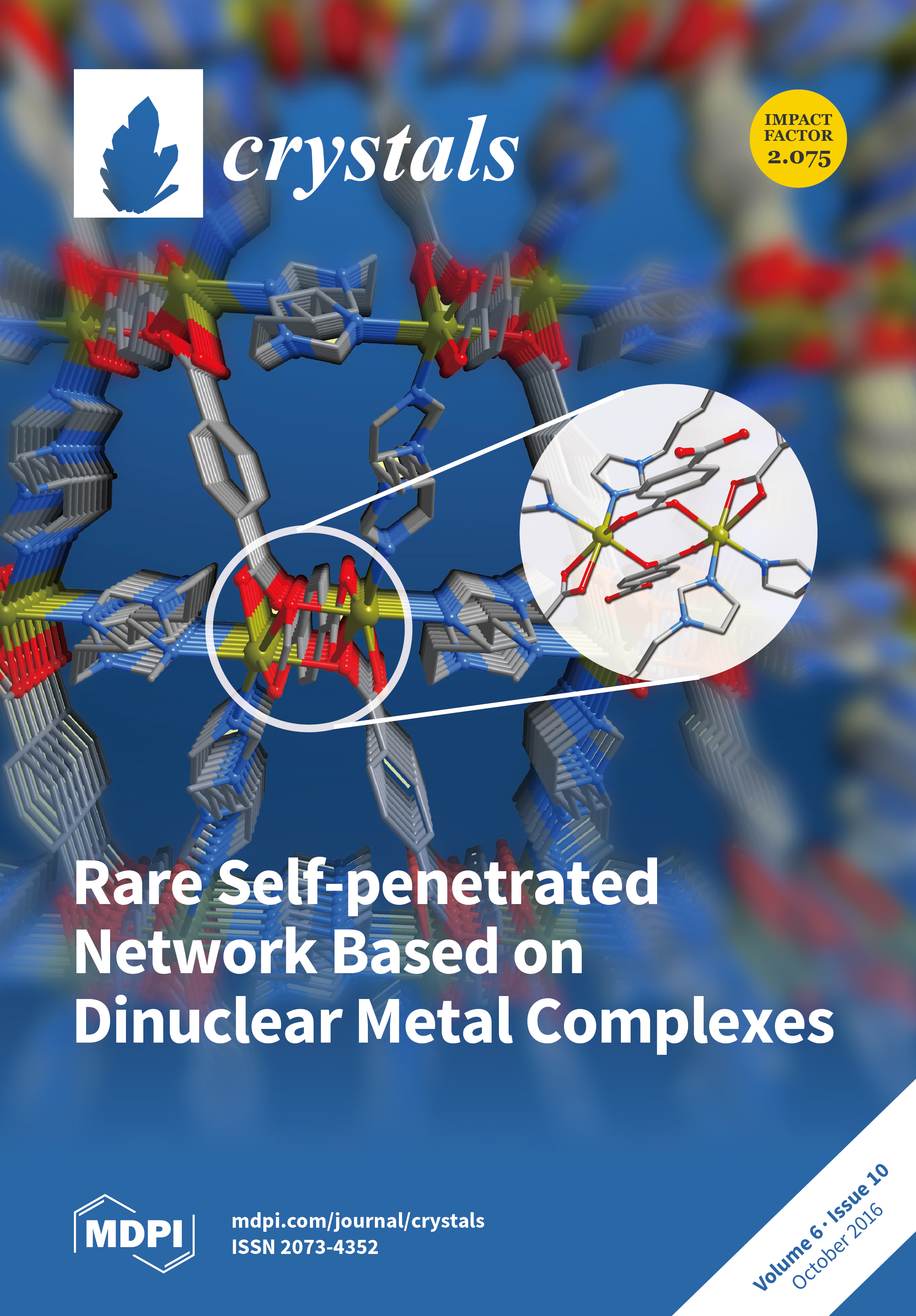Two new oxaspirocyclic compounds, 8-(4-(dimethylamino)benzylidene)-6,10-dioxaspiro[4.5]decane-7,9-dione (
1) and 8-(4-hydroxybenzylidene)-6,10-dioxaspiro[4.5]decane-7,9-dione (
2) have been synthesized and their structures determined by single crystal X-ray crystallography. Compound
1, C
17H
19NO
4, belongs to the monoclinic system, space group P21/c
[...] Read more.
Two new oxaspirocyclic compounds, 8-(4-(dimethylamino)benzylidene)-6,10-dioxaspiro[4.5]decane-7,9-dione (
1) and 8-(4-hydroxybenzylidene)-6,10-dioxaspiro[4.5]decane-7,9-dione (
2) have been synthesized and their structures determined by single crystal X-ray crystallography. Compound
1, C
17H
19NO
4, belongs to the monoclinic system, space group P21/c with a = 6.2554(13) Å, b = 14.605(3) Å, c = 16.265(3) Å,
β = 95.97(3)°, V = 1477.9(5) Å
3, Z = 4, D
c = 1.354 g/cm
3,
F(000) = 640,
μ(Mo
Ka) = 0.097 mm
−1, the final
R = 0.0570 and
wR = 0.1667. Compound
2, C
15H
14O
5, is also of the monoclinic system, space group P21/c with a = 10.739(2) Å, b = 18.348(4) Å, c = 6.7799(14) Å,
β = 104.20(3)°, V = 1295.1(5) Å
3, Z = 4, D
c = 1.407 g/cm
3,
F(000) = 608,
μ(Mo
Ka) = 0.106 mm
−1, the final
R = 0.0568 and
wR = 0.1739. Some C–H···O intra- and intermolecular hydrogen bonds and π··· π stacking interactions are both observed in the two lattice structures. The difference between them is that one type of C–H···π supramolecular interaction (
1) and one type of O–H···O intermolecular hydrogen bond (
2) are observed.
Full article





